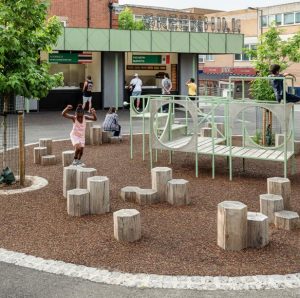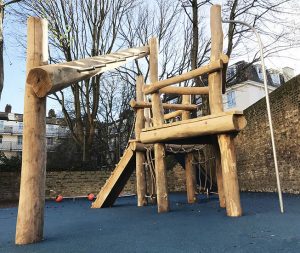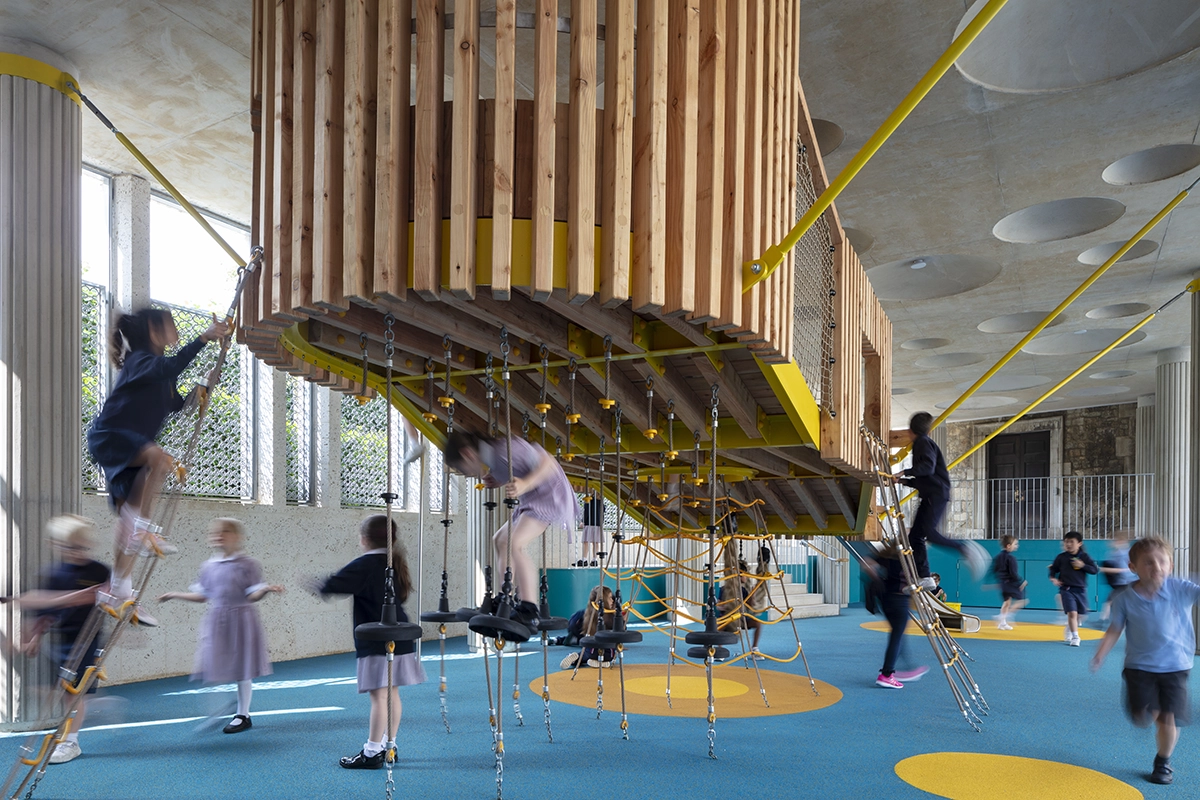Introduction
 Playgrounds are essential for children’s physical and mental development, providing a safe and engaging environment for them to explore, socialise, and have fun. But what if you’re working with limited space? This is a common challenge particularly in an urban environment The good news is that even a small area can be transformed into a vibrant and exciting playground. In this guide, we’ll walk you through the steps to design a small playground that maximises fun and functionality.
Playgrounds are essential for children’s physical and mental development, providing a safe and engaging environment for them to explore, socialise, and have fun. But what if you’re working with limited space? This is a common challenge particularly in an urban environment The good news is that even a small area can be transformed into a vibrant and exciting playground. In this guide, we’ll walk you through the steps to design a small playground that maximises fun and functionality.
Assess Your Space
Before you start designing your small playground, it’s crucial to assess the available space. Measure the dimensions accurately and take note of any obstacles, such as trees, utility poles, drains, or structures. Understanding the limitations of your space is the first step in creating an effective design.
Define Your Goals
Clearly define your goals for the small playground. What age group is it intended for? What are the primary objectives? Is it primarily for physical activity, educational play, or a combination of both? Understanding your goals will help you make informed decisions during the design process.
Optimise Layout and Zoning
In a small playground, efficient use of space is essential. Consider dividing the area into different zones or play areas to make the most of the available room. Possible zones might include:
- Active Play Zone: Space for physical activities like swings, slides, and climbing structures.
- Quiet Play Zone: Areas for activities like reading, drawing, or sensory play.
- Social Play Zone: Spaces for group games or interaction, such as benches or picnic tables.
Choose Appropriate Playground Equipment
Select equipment that suits the age group of children who will be using the playground. For small spaces, prioritise versatile and compact play structures that offer multiple play activities. Chose as supplier like PlayEquip that can be adaptive with their product. It doesn’t require too much work to make adjustment with equipment to make them fit. Equipment like modular play systems and interactive panels can provide a range of play experiences while minimizing space requirements. Equipment known as ‘forced movement’ such as swings and slides require additional safety surface and fall zones. It might therefore be a good idea to install other items.
Focus on Safety
 Safety should always be a top priority, regardless of playground size. Ensure that the play area has proper surfacing, such as rubber mulch or safety tiles, to cushion falls. Appropriate fall zone also needs to be factored in. This is a key detail that is often overlooked. It’s important to involve a qualified playground inspector during the design process. This ensures that the designs are compliant with the standards of EN 1167. It’s also a great way of reassuring all parties that all aspects of safety have been considered. Regularly inspect and maintain equipment to address any potential hazards promptly.
Safety should always be a top priority, regardless of playground size. Ensure that the play area has proper surfacing, such as rubber mulch or safety tiles, to cushion falls. Appropriate fall zone also needs to be factored in. This is a key detail that is often overlooked. It’s important to involve a qualified playground inspector during the design process. This ensures that the designs are compliant with the standards of EN 1167. It’s also a great way of reassuring all parties that all aspects of safety have been considered. Regularly inspect and maintain equipment to address any potential hazards promptly.
Be Creative with Design
Small playgrounds provide an excellent opportunity to get creative with design. Consider their settings and the environment around them, materials used, and unique design elements that can make your playground stand out. Incorporating natural elements like rocks, logs, or plants can add an appealing touch.
Maximise Vertical Space
When working with limited ground space, think vertically. This is one of the best ways to utilise a small space. Install elevated play structures that offer climbing opportunities and save valuable floor space. A great example of this can be see here. Multi-level play structures, net climbers, and overhead features can make the most of your vertical space.
Include Sensory Elements
Sensory play is essential for child development. Integrate sensory elements into your small playground design, such as tactile surfaces, musical instruments, or scented gardens. These features engage children’s senses and provide a well-rounded play experience.
Provide Seating and Shade
Incorporate seating options for caregivers and parents to supervise their children comfortably. Shade structures, such as pergolas or umbrellas, can make the playground more inviting, especially during hot weather.
Foster Inclusivity
Ensure that your small playground is inclusive and accessible to children of all abilities. Include wheelchair-accessible pathways, adaptive equipment, and features that promote sensory inclusivity.
Involve the Community
Engage with the local community, including parents, teachers, and children, to gather input and ideas. Their feedback can help shape a playground design that truly meets the needs of the area’s residents.
Maintain Flexibility
Finally, be open to adjustments and flexibility in your design. Small playgrounds may need to adapt to changing needs and usage patterns over time. Consider options for future expansion if space allows.
Conclusion
Designing a small playground may come with its challenges, but with thoughtful planning and creativity, you can create a vibrant and enjoyable space for children to play, learn, and grow. Believe it or not it’s easy to forget that children are small. If we (adults) can design a space always consider the size of the children. This well help the child believe the space is truly designed for them giving them more ownership over it. Remember to prioritise safety, inclusivity, and a variety of play experiences to make your small playground a cherished community asset. By following these guidelines, you can transform limited space into a world of fun and adventure for children of all ages.



